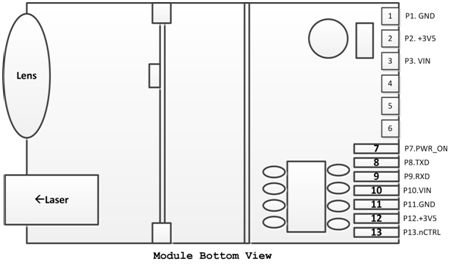1 Select the appropriate variety The varieties suitable for winter raising include cherry picker duck, Kangbei duck, Beijing duck, Gaoyou duck, Di Gao duck, and Shanghai white duck. 2 Cultivating young chicks You should choose strong breeds for winter raising. The standard of a young broodstock is: eyes are big and beautiful, lively and sexual, well-balanced, clean and shiny hair, soft and elastic abdomen, villi covering the navel, umbilicals healing well, legs are thick, mouths are big, and when you are struggling, you have a strong fight. The sound is loud and crisp. The hands touch the duck feet with a warm feeling. After the cloaca is opened, the contraction is strong. The cloacal cavity is clean and slightly moist. The ducklings remain at 27-30°C within 7 days after being hatched, and can drop 1~2°C every day after 7 days. After 15 days, maintain about 15°C. After 20 days, feed at room temperature. As far as possible, the product ducklings are used in full price with pellets. Formulations for self-inflation: corn 45%, broken rice 10%, wheat 5%, wheat bran 5%, fried soybean 17%, rapeseed cake 7%, cocoon 7%, shells Powder 2.7%, bone powder 1%, salt 0.3%. 3 Breeding (1) House rearing and breeding are suitable for white feathers such as cherry picker ducks, Beijing ducks and Di Gao ducks. In the pen house, a 60 cm gridded duck bar is laid with bamboo strips, 5 square meters each, and 20 to 30 ducks. On the sidewalks of the sidewalks, there are troughs and troughs on the side of the sidewalk. Formulations for compound feed: 62% for corn, 15% for wheat, 6% for fried peas, 7% for fishmeal, 7% for rapeseed, 2.8% for bone meal, and 0.2% for salt. The ratio of green material to compound feed is 1 to 1.5:1. (2) Grazing bred. Applicable to Gaoyou Duck, Jianchang Duck and other duck breeds. Grazing once each morning and afternoon, before 11 o'clock in the morning and before 16 o'clock in the afternoon, each time the grazing returns, feed supplements should be added at full price according to the conditions of foraging. 4 Short-term fattening Ducks are most suitable for fattening from 45 to 60 days. Formulation of self-ingredients, preliminary: corn 35%, flour 26.5%, rice bran 30%, fried soybean 5%, shell powder 2%, bone meal 1%, salt 0.5%; later: corn 35%, flour 30%, rice bran 25% Sorghum 6.5%, shell powder 2%, bone meal 1%, salt 0.5%. Fattening methods: 1 Self-fertility fattening, feeding 4 times a day, feeding ducks into the water after bathing, plus feeding 1 night food, feeding water while feeding. The light in the duck house should be dark, so that the ducks are less active and have more rest. Ducks should be clean and dry. 2 Filling fattening. Mix the feed with water and make it into a dry paste. Use hand-rolled round bars with a diameter of about 3 cm and a length of 5 cm. Fill the ducks with round bars. When feeding the ducks, first lubricate the round bars and lubricate them. The mouth of the duck is filled into the esophagus. It is fed 3 times a day. The first to third days are filled with 3 to 4 round bars at a time; 4 to 8 days, 4 to 6 roots are filled at a time; each time after 8 days Feed 6 to 8 roots, filled with water for drinking. The fattening period is generally 10 to 15 days. Industrial Laser Distance Sensor
Industrial
Laser Distance Sensor, we also call it secondary development laser distance
module, which support TTL level and CMOS. The laser range sensor can be widely
used in professional surveying, mapping, construction, robots, hunting arrows,
industrial monitoring and automated measurement applications in electricity,
transportation, etc. Our laser distance module supports data communication with
RS232, USB with a simple adapter. The results of laser distance sensor can be
evaluated with Arduino. We are always looking ahead, hoping we can make every
measurement simple in life!
Parameters
of M703A:
Accuracy
±1
mm (0.04 inch)
Measuring
Unit
meter/inch/feet
Measuring
Range (without Reflection)
0.03-150m
Measuring
Time
0.1~3
seconds
Laser
Class
Class
II
Laser
Type
635nm,
<1mW
Size
72*40*18mm
(±1 mm)
Weight
About
21g
Voltage
DC2.0~3.3V
Electrical
Level
TTL/CMOS
Frequency
10Hz
Operating
Temperature
0-40 ℃ (32-104 ℉ )
Storage
Temperature
-25~60 ℃ (-13~140 ℉)
Laser Distance RS232,Arduino Distance Module,Laser Module RS232 Chengdu JRT Meter Technology Co., Ltd , https://www.cdtoflidarsensor.com